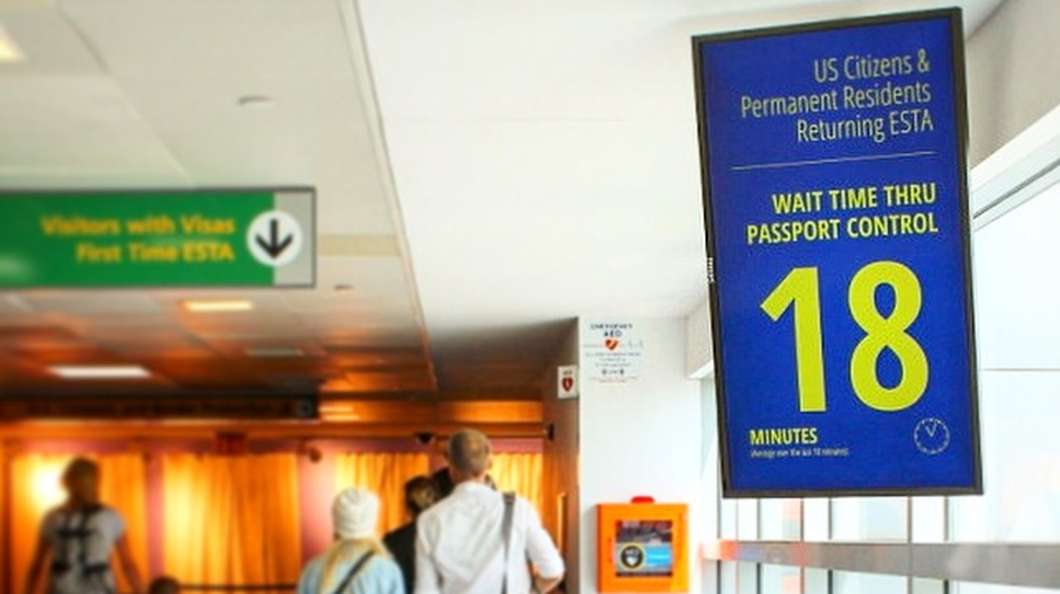JFK, one of the world’s largest and busiest airports located in New York, now has 13 screens in Terminal 4 that present traveler processing times. The wait times are driven by beacons positioned at TSA Security and Customs, Border Protection checkpoints, and the indoor taxi queue, which anonymously monitor passenger’s mobile devices as they move through the airport.

“It continuously updates,” said Daryl Jameson, vice president at the company JFKIAT, which runs Terminal 4. “People like to know how long they are going to wait in queues. Nobody likes to wait in lines and signage helps to manage expectations.”
The beacons make use of the BlipTrack solution, invented by Denmark-based BLIP Systems, which detects the Wi-Fi or Bluetooth signal of nearby mobile devices that are in “discoverable” mode. When a phone or tablet passes the beacons, its MAC address (non-personal unique ID), is recorded, encrypted, and time-stamped, ensuring that none of the user’s personal data is noted.
Identifying the device from different beacons makes travel times and movement patterns available down to the last minute, with remarkable accuracy. Using this data, staff at JFK can reduce customer frustration and notify them if areas are becoming congested, where staff can then take action before it escalates.
“We’re probably reaching 19.5 million passengers this year in total. It’s a big operation, which is why we’re introducing innovations to enhance the operations of the building. This new system will help us manage and eliminate problem spots within the facility, and sharing the processing time with our travelers will provide them with peace of mind so they may continue to expect a pleasant travel experience. Additionally, data from travelers’ phones could eventually influence future airport design,” said Gert-Jan de Graaff, President and CEO of JFKIAT.

The screens were privately funded and cost more than $250,000, according to JFKIAT. The BlipTrack solution was also introduced at Cincinnati, Toronto, Dublin, Amsterdam, Barcelona, Manchester, Dubai, Auckland, Oslo, Helsinki, Milano, Brussels, and Copenhagen airports, as well as in road traffic in the U.S., Australia, New Zealand, Denmark, UK and Switzerland, at railway stations in the Netherlands, and at the world’s busiest passenger port in Dover, England.
Source: Blip Systems
Advertisement
Learn more about Electronic Products Magazine





